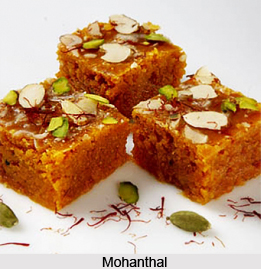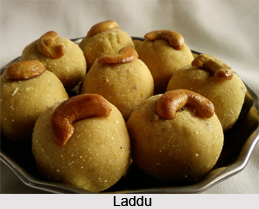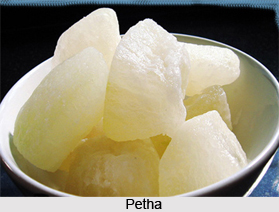Indian Dry Sweets form an integral part of the culture and lifestyle of the people of India. Composed of a variety of ingredients, these sweets elate the taste buds of people with different choices. Tremendous variety can be found in Indian Dry Sweets and different regions of India have evolved their own specialities.
 Significance of Indian Dry Sweets
Significance of Indian Dry Sweets
Apart from being a favourite confectionary of Indian people, Indian Dry Sweets cater the need of almost all the occasions in the country. India has a plethora of festivals and sweets are an essential requirement in Indian festivals. In Indian tradition, cultural or religious ceremonies remain incomplete without sweets. These are also considered auspicious and thus are an important part of Indian culture. Many people prepare a variety of dry sweets at home whereas sweet shops are also scattered at every nook and corner throughout the country. Indian Dry Sweets can be broadly classified in two categories viz. milk based and flour based. Milk based dry sweets include Peda, Barfi, kalakand etc. whereas flour based sweets enlist Laddu, Mohan Thal, Halwa and many more.
East Indian Dry Sweets
West Bengal has always been the king of Indian sweets. The craving for sweets can be best observed among the people of this state. Sandesh are the most typical dry sweets of this region. Numerous types of Sandesh are found in West Bengal, varying in composition and taste. Many age old recipes are still the favourite of people of Bengal whereas many new recipes have also emerged to prepare some of the most luscious dry sweets. Bihar is also no less in offering a variety of tempting dry sweets. Sweets of this region include Laddu, Balushahi, Khaja, kesaria peda and Tilkut. These are among the most adored traditional sweets of Bihar. Some of them are also associated with specific festivals like Balushahi is an essential requirement of Raksha Bandhan and Diwali. Best and the most delicious Tilkults are prepared in Gaya region of Bihar. In Jharkhand, Peda is the most cherished dry sweet. In fact, Peda industry provides livelihood to numerous people of Jharkhand. Deoghar district is renowned all over India for its scrumptious Pedas. People of Orissa are also fond of sweets and the dry sweets of this state include Kalakand, Chittau Pitha, Enduri Pitha etc. Sweets of Orissa are usually milk based. Combination of various ingredients brings about a variety of delicious flavours.
 West Indian Dry Sweets
West Indian Dry Sweets
In western India, a vast array of sweets is found in Gujarat which enlists Mohanthal, Puran Poli, Sutarfeni, Sweet Satta, Besan Barfi and many more. Goa also presents a special variety of sweets including Kokad, Channa Doss, Neureos, and Coconut Ice etc. Many sweets of Goa are related to specific festivals like Christmas, Diwali etc. Ukdiche modak and Puran Poli are the specialities of Maharashtra and are relished especially in the occasions of Ganesh Chaturthi and Maharashtrian New Year respectively. Puran Poli is basically a roti, with a stuffing of jaggery and gram flour, whereas Modak is made of rice flour stuffed with coconut cooked with jaggery.
South Indian Dry Sweets
In Kerala most of the dry sweets are consumed as tea time snacks. Unniappam is one of the famous sweet of Kerala which is prepared by fried rice. Kozhakkatta, ilayappam, cakes and cookies are other common dry sweets of Kerala. Most of the traditional sweets in this region are made of rice. Karnataka also has its own set of traditional dry sweets which are unique and delicious in taste. Sikkinunde, Tambittu, Hesarunde, Godhiunde etc are some common sweets of Karnataka. Sweets also form in important part of the culture and tradition of Andhra Pradesh. Besides being used in religious and cultural ceremonies, these are also gifted to the visiting relatives. People of Andhra Pradesh also love to have dry sweets as evening snacks. Common sweets of this region are Boondi Laddu, Rava Laddu, Laskora Undalu etc. In Tamil Nadu also, there is a great demand of dry sweets. Both milk and flour based sweets are prevalent and are an integral part of festivals, occasions, marriage ceremonies etc. Most common sweets of Tamil Nadu are Halwa, Barfi, Kesari, Laddu, Sweet Samosa and many more.
 North Indian Dry Sweets
North Indian Dry Sweets
In northern India, Uttar Pradesh has provided some of the best and unique dry sweets. Petha is a special sweet which is well known all over India. Petha comes in different flavours. Apart from this, other sweets of Uttar Pradesh include Halwa, Gujia, Kaju Katli, Barfi, Kalakand, Gond ke Laddu, Motichoor Laddoo etc. Punjab has also rendered some delightful recipes of dry sweets which include Anjeer Halwa, Apple Halwa, Dry Fruit Barfi, Chana Dal Halwa etc. Pinni is one of the most well known sweet delicacies of Haryana.
Irrespective of different cultural backgrounds, people all over India have a craving for sweets. Indian Dry Sweets have become an essential part of Indian Culture and festivals. Diwali, Dussehra, Christmas, Eid, Baisakhi, birthday parties, wedding ceremonies and all other celebrations in India remain incomplete without sweets. Nowadays, to serve the yearnings of diabetic patients, sugar free sweets are also prepared which are as luscious as those prepared with sugar. Not only the people of India, but the tourists from different parts of the world also relish Indian Dry Sweets.




















